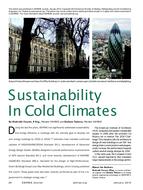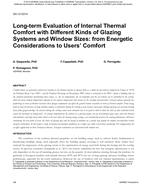Click here to purchase
The advent of microcontroller applications within theInternet of Things (IoT) affords significant opportunitiesto analyze and improve energy efficiency, occupantcomfort, and thermal distribution within a givenenvironment. IoT devices can operate autonomously,collecting valuable data ranging from temperature,humidity, and air quality, to energy consumption andeven behavioral patterns. When integrated into aframework using robust communication protocols, suchas message-oriented middleware (MOM), additionalfeatures including hot-swapping, redundancy, andenergy consumption can also be managed.This paper studies the development of such an IoTnetwork operating within a unique residential setting.The home under study is a 2-story 1920’s era home,housing three graduate students, who live and work in itas a “living laboratory”. The house is currentlyundergoing a total electrical transformation to retrofitdevices and appliances to operate on direct current (DC)power, which is supplied through a DC nanogridinfrastructure. Networked sensors and devices canleverage this DC grid through the use of technology suchas Power over Ethernet (PoE), providing simultaneouspower and data transfer over the same medium. IoTdevices within this network can collect data across awide range of sources, and utilize sensor fusion toprovide insights into building metrics and thermalcharacterization. This design can also serve as a platformfor future energy-saving modifications efforts andautomated building controls.
Citation: ASHRAE/IBPSA-USA Bldg Simulation Conf, Sept 2020
Product Details
- Published:
- 2020
- Number of Pages:
- 8
- Units of Measure:
- Dual
- File Size:
- 1 file , 1 MB
- Product Code(s):
- D-BSC20-C032


